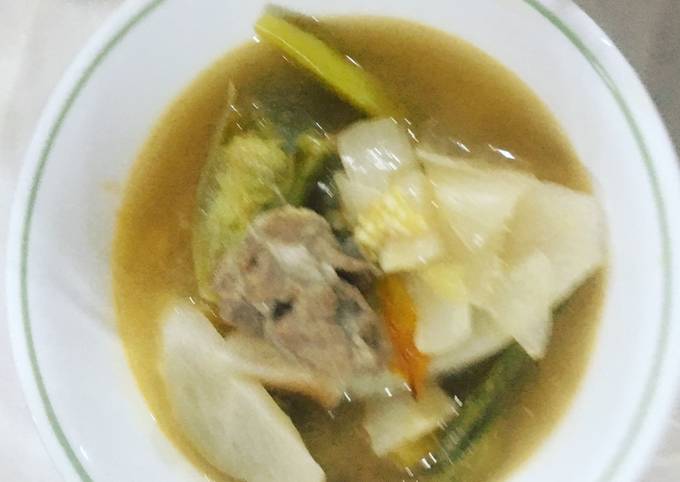Easiest Way to Make Yummy Pork Sinigang
Pork Sinigang. Stir in the ginger, tomatoes, and pork chops. Cover and reduce heat to medium-low. Turn the pork occasionally, until browned.
 Reduce heat; add onions, tomatoes, and taro. Sinigang is a sour soup native to the Philippines. This recipe uses pork as the main ingredient. You can have Pork Sinigang using 10 ingredients and 3 steps. Here is how you achieve it.
Reduce heat; add onions, tomatoes, and taro. Sinigang is a sour soup native to the Philippines. This recipe uses pork as the main ingredient. You can have Pork Sinigang using 10 ingredients and 3 steps. Here is how you achieve it.
Ingredients of Pork Sinigang
- Prepare of pork cut into.
- You need of Vegetables.
- Prepare of Onions cut into quarters.
- It's of Tomatoes cut into.
- Prepare of Okra tops cut.
- It's of String beans cut into.
- Prepare of Labanos or daikon radish cut diagonal shape.
- Prepare of Eggplant sliced.
- It's of Green Finger chilies.
- Prepare of Knorr Sinigang mix.
Other proteins and seafood can also be used. Beef, shrimp, fish are commonly used to cook sinigang. Add pork ribs to the pot and stir to combine with aromatics. Put tamarind pulp in a fine.
Pork Sinigang step by step
- Heat pot with oil then cook meat until meat changes color then add onions and tomatoes. Stir add fish sauce or Patis..
- Add water fill until half way then bring to a boil, then simmer until meat is tender. Then add other vegetables I started with the labanos then okra. Then I like to add the green chilies bring to a boil then simmer add Sinigang mix stir so everything is incorporated.
- Add remaining vegetables. Simmer until everything is tender. Then turn off heat see with hot rice..
Pork Sinigang is a native cuisine in the Philippines - particularly known for its sour taste. If you want to taste one famous cuisine among locals then this must be one of the first cuisines you must try. Traditionally, sinigang is tamarind-based but calamansi, unripe mango, guava and bilimbi may also be used as souring agent. Preparation In a large pot, heat the oil over medium-high until shimmering. Pork Sinigang is a Filipino soup or stew that is characterized by its sour and salty flavor most often associated with tamarind (in Filipino, sampalok).
Comments
Post a Comment